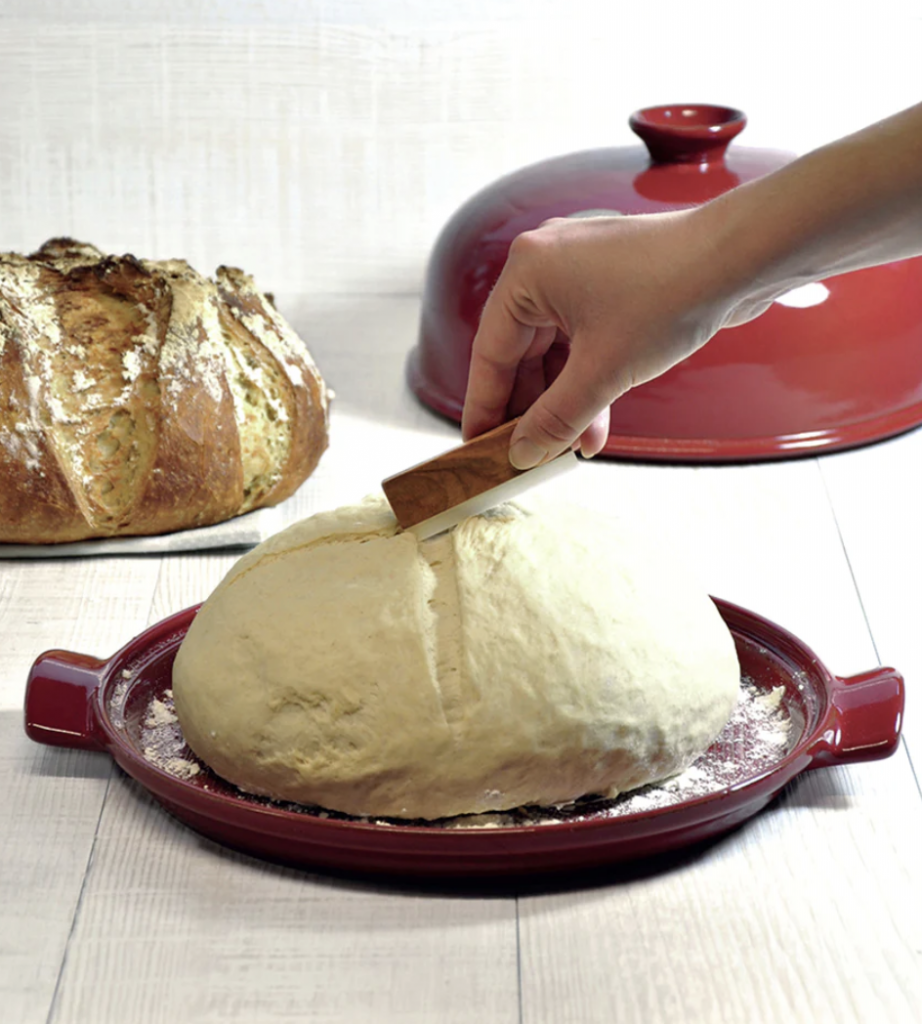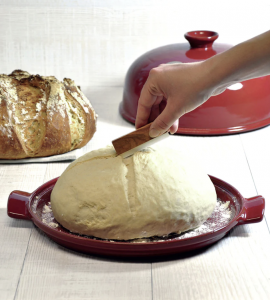Ingredients
To begin your starter
- 1 cup King Arthur Whole Rye (pumpernickel) or Whole Wheat Flour
- 1/2 cup cool water
To feed your starter
- Scant 1 cup King Arthur Unbleached All-Purpose Flour
- 1/2 cup cool water (if your house is warm), lukewarm water (if your house is below 68 degrees)
Quick Tip
WHY DO YOU NEED TO DISCARD HALF THE STARTER?
It seems so wasteful... But unless you discard starter at some point, eventually you’ll end up with a very large container of starter. Also, keeping the volume down offers the yeast more food to eat each time you feed it; it’s not fighting with quite so many other little yeast cells to get enough to eat. You don’t have to actually discard it if you don’t want to, either; you can give it to a friend, or use it to bake. There are quite a few recipes on KingArthurBaking.com using “discard” starter, including pizza crust, pretzels, and waffles, and even chocolate cake. If you’re still uncomfortable dealing with discard, though, try maintaining a smaller starter: the smaller the starter, the smaller the amount of discard.
Why does this starter begin with whole-grain flour? Because the wild yeast that gives sourdough starter its life is more likely to be found in the flora- and fauna-rich environment of a whole-grain flour than in all-purpose flour. What if all you have is all-purpose flour, no whole wheat? Go ahead and use all-purpose; you may find the starter simply takes a little longer to get going. Also, if you feed your starter on a long-term basis with anything other than the all-purpose flour called for here, it will probably look different (thicker or thinner, a different color) and act differently as well. Not to say you can’t feed your starter with alternate flours; just that the results may not be what you expect.
SHOULD YOU USE BOTTLED WATER?
Unless your tap water is so heavily treated that you can smell the chemicals, there’s no need to use bottled water; tap water is fine.
A NOTE ABOUT ROOM TEMPERATURE
The colder the environment, the more slowly your starter will grow. If the normal temperature in your home is below 68°F, we suggest finding a smaller, warmer spot to develop your starter. For instance, try setting the starter atop your water heater, refrigerator, or another appliance that might generate ambient heat. Your turned-off oven — with the light turned on — is also a good choice.
Regarding the duration of everyday feeding, here is some great advice: “Conditions vary so widely that 7 days can be far too little. I’ve learned the key is to watch for a dramatic and consistent rise in the jar — at least doubling between 1 and 4 hours after feeding. This could be 7 days or less after you begin, or it could be three weeks (for me it was 12 to 14 days). Bakers may want to watch for this phenomenon, rather than watch the calendar.”
Recipe Preparation
- DAY 1
Combine the pumpernickel or whole wheat flour with the cool water in a non- reactive container. (If you have only all-purpose flour, you can use it. But it may take an additional day or two to get going.) Glass, crockery, stainless steel, or food-grade plastic all work fine for this. Make sure the container is large enough to hold your starter as it grows; we recommend at least 1-quart capacity. Stir everything together thoroughly; make sure there’s no dry flour anywhere. Cover the container loosely and let the mixture sit at warm room temperature (about 70°F) for 24 hours. See TIPS* for advice about growing starters in a cold house.
- DAY 2
You may see no activity at all in the first 24 hours, or you may see a bit of growth or bubbling. Either way, discard half the starter (about 1/2 cup), and add to the remainder a scant 1 cup King Arthur Unbleached All-Purpose Flour, and 1/2 cup cool water (if your house is warm); or lukewarm water (if it’s cold). Mix well, cover, and let the mixture rest at room temperature for 24 hours.
- DAY 3
By the third day, you’ll likely see some activity — bubbling, a fresh, fruity aroma, and some evidence of expansion. It’s now time to begin two feedings daily, as evenly spaced as your schedule allows. For each feeding, stir down the starter and measure out a generous 1/2 cup. Discard any remaining starter. Add a scant 1 cup King Arthur Unbleached All-Purpose Flour, and 1/2 cup water to the reserved starter. Mix the starter, flour, and water, cover, and let the mixture rest at room temperature for approximately 12 hours before repeating.
- DAY 4
Measure out a generous 1/2 cup of starter and discard any remaining starter. Repeat steps from Day 3.
- DAY 5
Measure out a generous 1/2 cup of starter and discard any remaining starter. Repeat step from Day 3. By the end of Day 5, the starter should have at least doubled in volume. You’ll see lots of bubbles; there may be some little “rivulets” on the surface, full of finer bubbles. Also, the starter should have a tangy aroma — pleasingly acidic, but not overpowering. If your starter hasn’t risen much and isn’t showing lots of bubbles, repeat discarding and feeding every 12 hours on day 6, and day 7, if necessary — as long as it takes to create a vigorous (risen, bubbly) starter. See TIPS*.
- Once the starter is ready, give it one last feeding. Measure out a generous 1/2 cup of starter and discard any remaining starter. Feed as usual. Let the starter rest at room temperature for 6-8 hours; it should be active, with bubbles breaking the surface.
Remove however much starter you need for your recipe — typically no more than about 1 cup. If your recipe calls for more than 1 cup of starter, give it a couple of feedings without discarding, until you’ve made enough for your recipe plus 1/2 cup to keep and feed again.
Transfer the remaining 1/2 cup of starter to its permanent home: a crock, jar, or whatever you’d like to store it in long-term. Feed this reserved starter with 1 scant cup of flour and 1/2 cup water, and let it rest at room temperature for several hours, to get going, before covering it. If you’re storing starter in a screw-top jar, screw the top on loosely rather than airtight.
Store this starter in the refrigerator. Feed it regularly; we recommend feeding it with a scant 1 cup flour and 1/2 cup water once a week.

